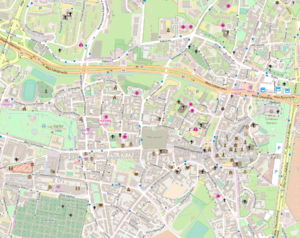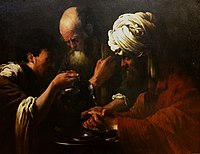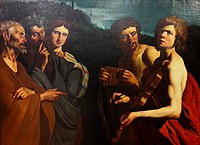|
National Museum, Lublin
The National Museum in Lublin (Polish: Muzeum Narodowe w Lublinie) is one of the oldest and largest museums in Eastern Poland, located in Lublin. It was created in 1914, and received its own building in 1923.[1] History The history of the Lublin Museum dates back to the beginning of the 20th century, and is associated with Hieronim Łopaciński, a junior high school teacher and a correspondent of the Academy of Learning, amateur historian, ethnographer, bibliophile and lover of antiquity.[1] Thanks to his efforts in 1901, two exhibitions were organized in Lublin.[1] The exhibition of art and antiquities was opened on June 4 in the former Dominican Monastery.[1] Approximately 4,000 exhibits were assembled – engravings, paintings, sculptures, decorative arts, documents, prints, manuscripts, excavated artefacts, guild artefacts, arms, coins, medals, stamps and maps.[1] The industrial and agricultural exhibition was opened on June 22 with ethnographic section where folk costumes, wooden products and ritual art were presented.[1] In 1974, the premises of Lublin Castle were adapted for the needs of the District Museum in Lublin, established in 1950. [1] The permanent exhibitions of painting, decorative arts, armaments, archeological, ethnographic, and numismatic artefacts were opened.[1] In 1987 the museum was renamed the Lublin Museum.[1] On 15 May 2020, the Lublin Museum was nationalized, and therefore officially promoted to the rank of a National Museum, seamlessly the ownership of museum was transferred from the local government (pol. Sejmik Województwa) and placed under the authority of Polish Ministry of Culture. [2] Permanent collectionIt has permanent collections for:
Gallery
See alsoReferencesExternal linksWikimedia Commons has media related to National Museum in Lublin. 51°15′02″N 22°34′20″E / 51.25056°N 22.57222°E
|
||||||||||||||||









